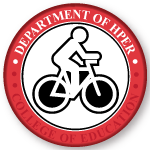Author ORCID Identifier
Document Type
Article
Publication Date
4-1-2016
Publication Title
American Journal of Physiology Heart and Circulatory Physiology
Volume
310
Issue
7
First Page
821
Last Page
829
Abstract
Exercise training is recognized to improve cardiac and skeletal muscle mitochondrial respiratory capacity; however, the impact of chronic exercise on vascular mitochondrial respiratory function is unknown. We hypothesized that exercise training concomitantly increases both vascular mitochondrial respiratory capacity and vascular function. Arteries from both sedentary (SED) and swim-trained (EX, 5 wk) mice were compared in terms of mitochondrial respiratory function, mitochondrial content, markers of mitochondrial biogenesis, redox balance, nitric oxide (NO) signaling, and vessel function. Mitochondrial complex I and complex I + II state 3 respiration and the respiratory control ratio (complex I + II state 3 respiration/complex I state 2 respiration) were greater in vessels from EX relative to SED mice, despite similar levels of arterial citrate synthase activity and mitochondrial DNA content. Furthermore, compared with the SED mice, arteries from EX mice displayed elevated transcript levels of peroxisome proliferative activated receptor-γ coactivator-1α and the downstream targets cytochrome c oxidase subunit IV isoform 1, isocitrate dehydrogenase (Idh) 2, and Idh3a, increased manganese superoxide dismutase protein expression, increased endothelial NO synthase phosphorylation (Ser1177), and suppressed reactive oxygen species generation (all P < 0.05). Although there were no differences in EX and SED mice concerning endothelium-dependent and endothelium-independent vasorelaxation, phenylephrine-induced vasocontraction was blunted in vessels from EX compared with SED mice, and this effect was normalized by NOS inhibition. These training-induced increases in vascular mitochondrial respiratory capacity and evidence of improved redox balance, which may, at least in part, be attributable to elevated NO bioavailability, have the potential to protect against age- and disease-related challenges to arterial function.
Recommended Citation
Exercise training improves vascular mitochondrial function Song-Young Park, Matthew J. Rossman, Jayson R. Gifford, Leena P. Bharath, Johann Bauersachs, Russell S. Richardson, E. Dale Abel, J. David Symons, and Christian Riehle American Journal of Physiology-Heart and Circulatory Physiology 2016 310:7, H821-H829


Comments
This is the accepted manuscript of an article published in The American Journal of Physiology Hearth Circulation Physiology that can be accessed at https://doi.org/10.1152/ajpheart.00751.2015